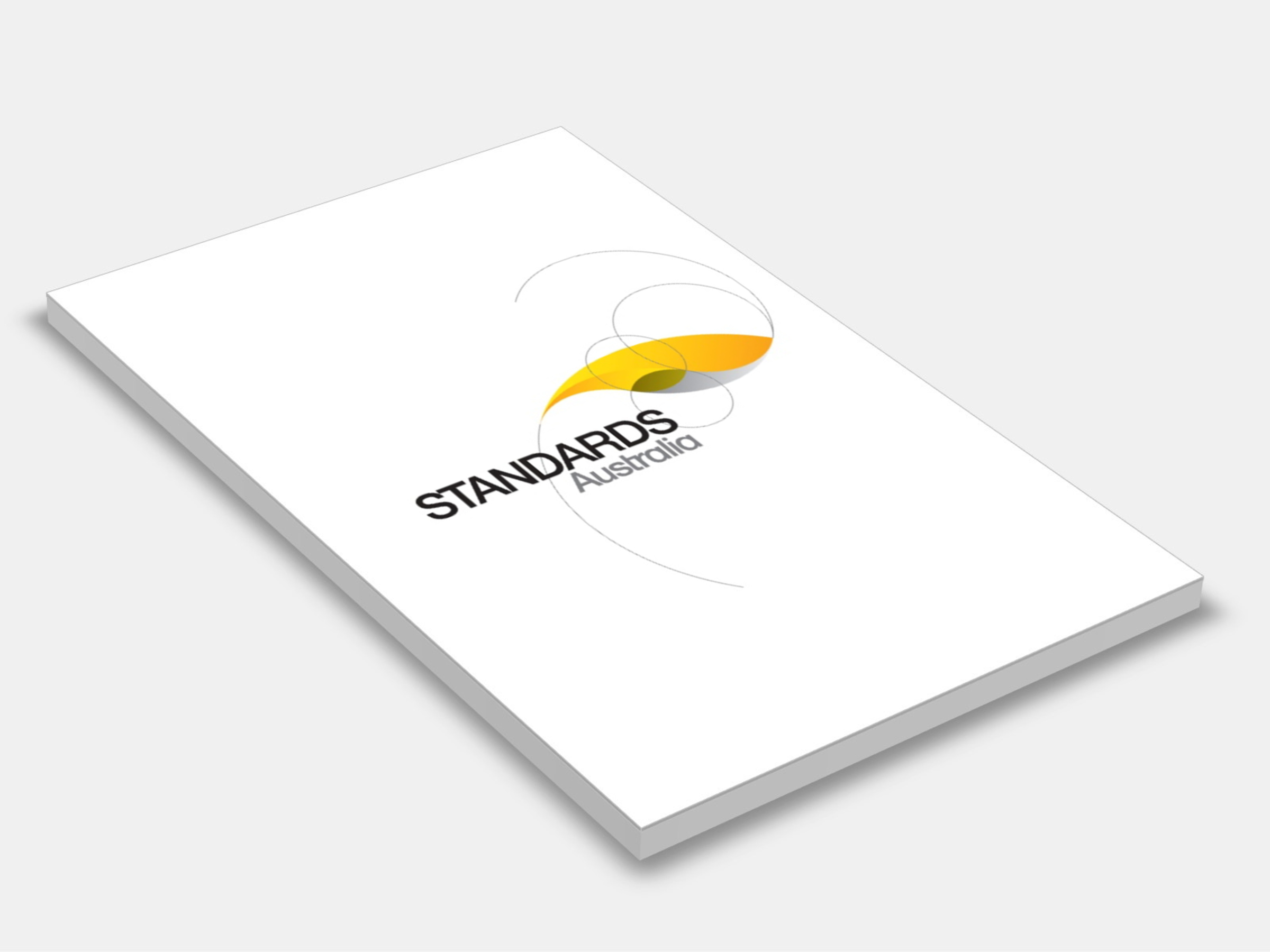
Type
Publisher
Standards Australia/Standards New Zealand
Publisher
Standards Australia/Standards New Zealand
Version:
Third Edition 2016.
(Current)
Short Description
Applicable to the design, construction, and installation of refrigerating systems, including piping, components, materials, and ancillary equipment directly associated with such systems.
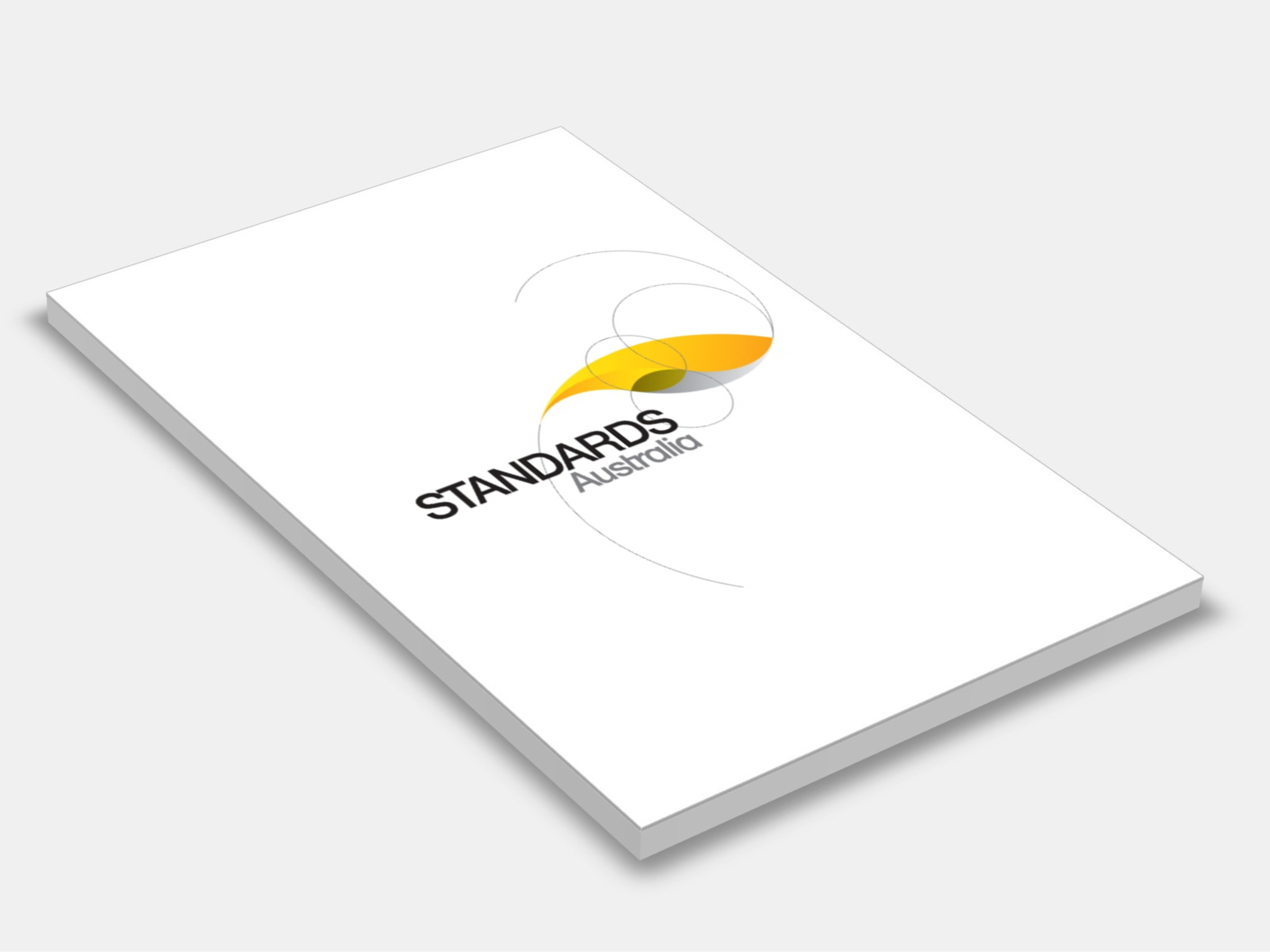
Type
Publisher
Standards Australia/Standards New Zealand
Publisher
Standards Australia/Standards New Zealand
Version:
Second Edition 2016.
(Current)
Short Description
Specifies the requirements for the safety of persons and property, provides guidance for the protection of the environment, and establishes procedures for the operation, maintenance, and repair of refrigerating systems and the recovery of refrigerants.
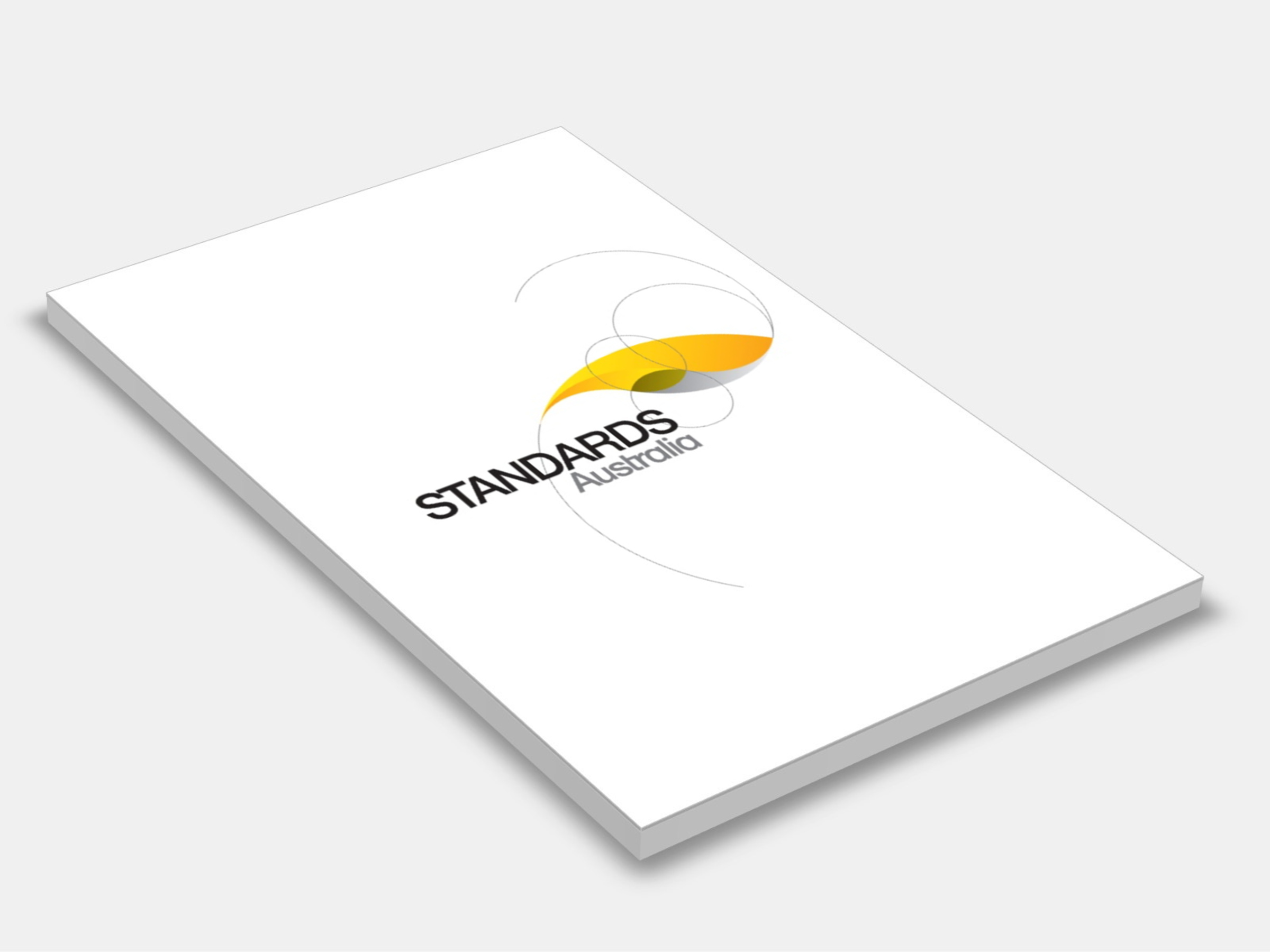
Type
Publisher
Standards Australia/Standards New Zealand
Publisher
Standards Australia/Standards New Zealand
Version:
First Edition 2016.
(Current)
Short Description
This Standard provides an unambiguous system for assigning designations to refrigerants. It also establishes a system for assigning a safety classification to refrigerants based on toxicity and flammability data, and provides a means of determining the refrigerant concentration limit.
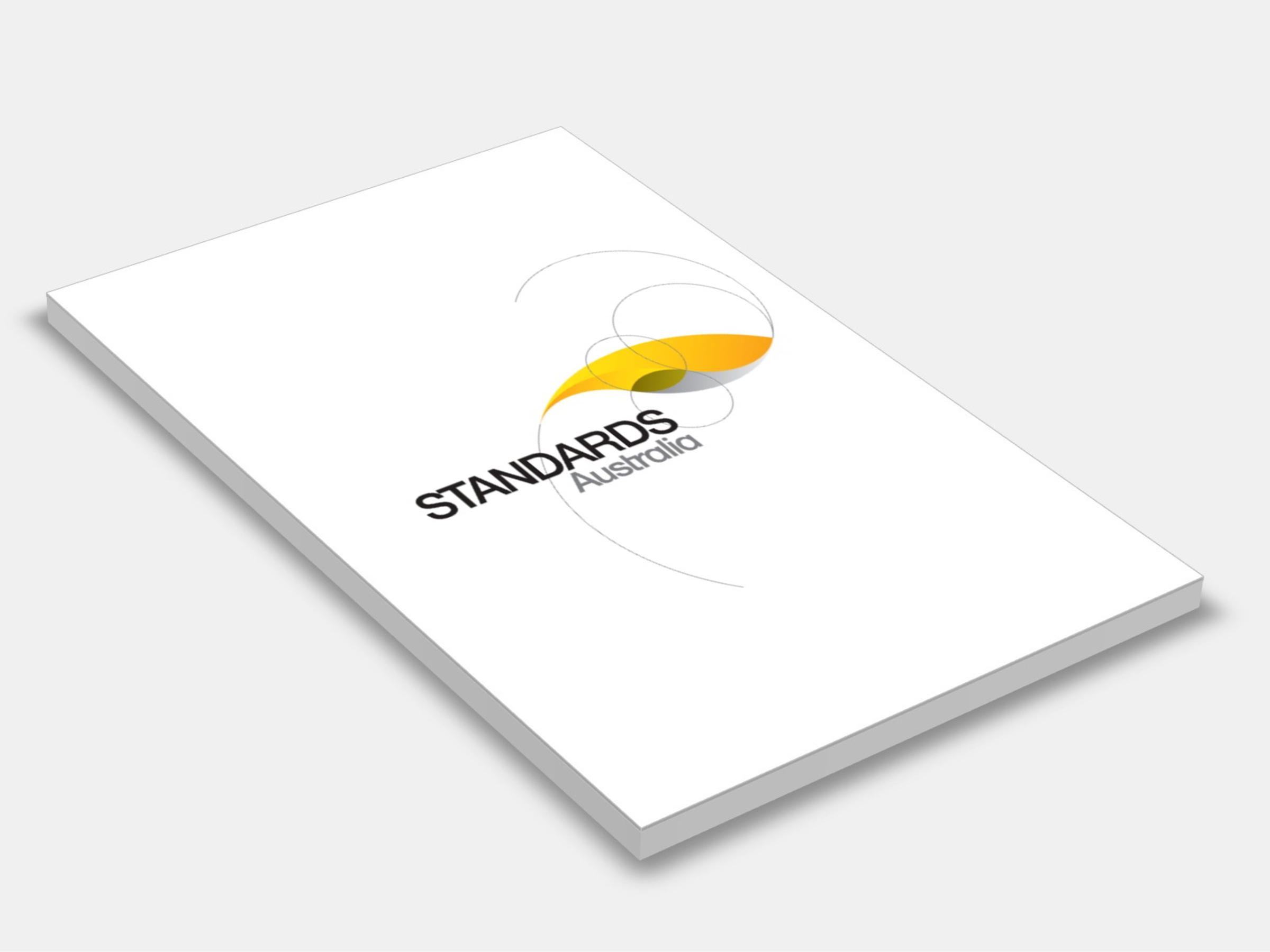
Type
Publisher
Standards Australia/Standards New Zealand
Publisher
Standards Australia/Standards New Zealand
Version:
Second Edition 2016.
(Current)
Short Description
Specifies a simple means of referring to common refrigerants instead of using the chemical name, formula, or trade name. It also establishes a uniform system to be used in assigning the proper reference number and classification to refrigerants; the system for refrigerant classification is defined and physical data of common refrigerants listed.
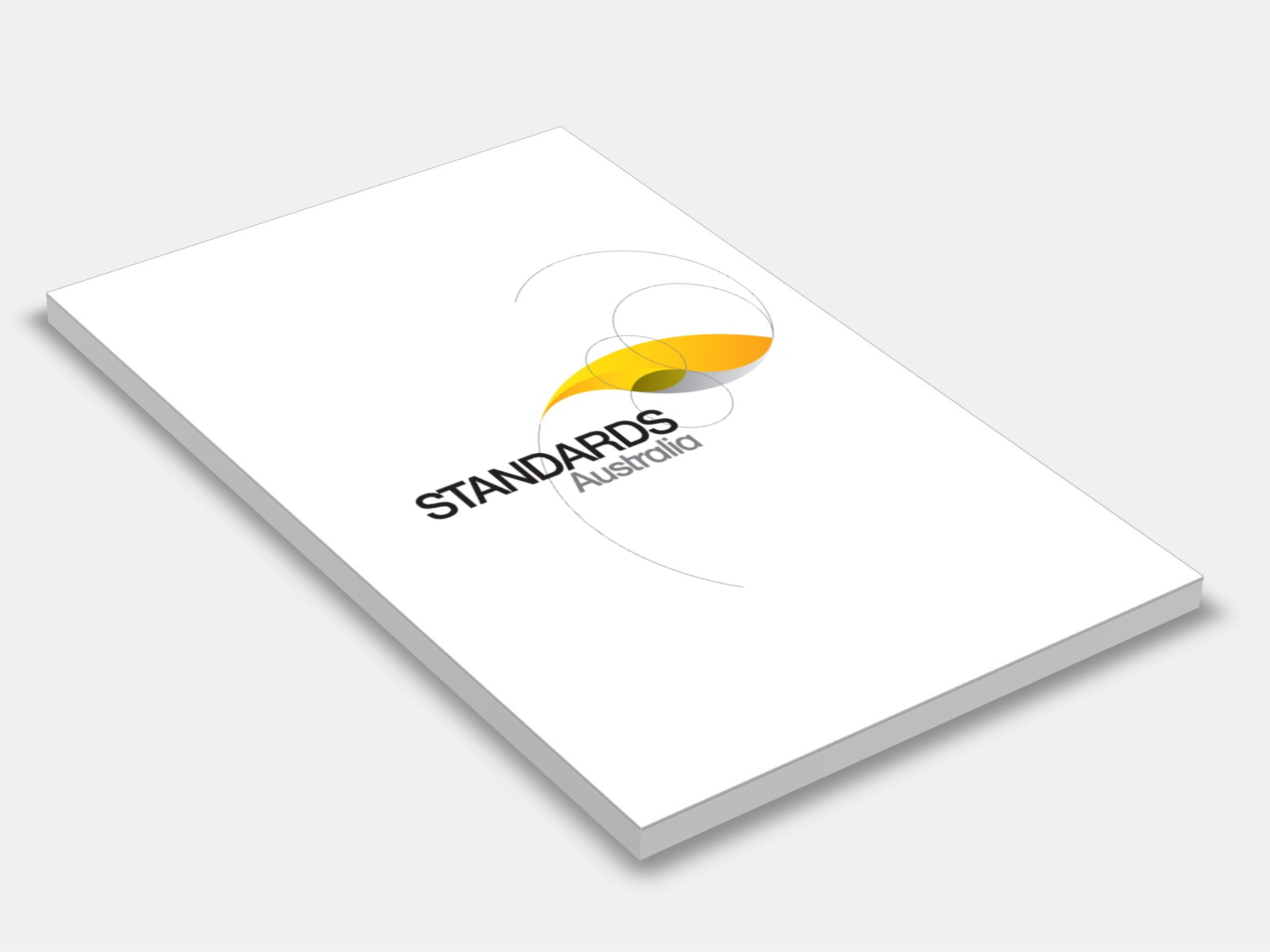
Type
Publisher
Standards Australia/Standards New Zealand
Publisher
Standards Australia/Standards New Zealand
Version:
Second Edition 2016.
(Current)
Short Description
Specifies requirements for safety and environmental aspects in relation to operation, maintenance and repair of refrigerating systems and the recovery, reuse and disposal of all types of refrigerant, refrigerant oil, heat transfer fluid, refrigerating system and part thereof.
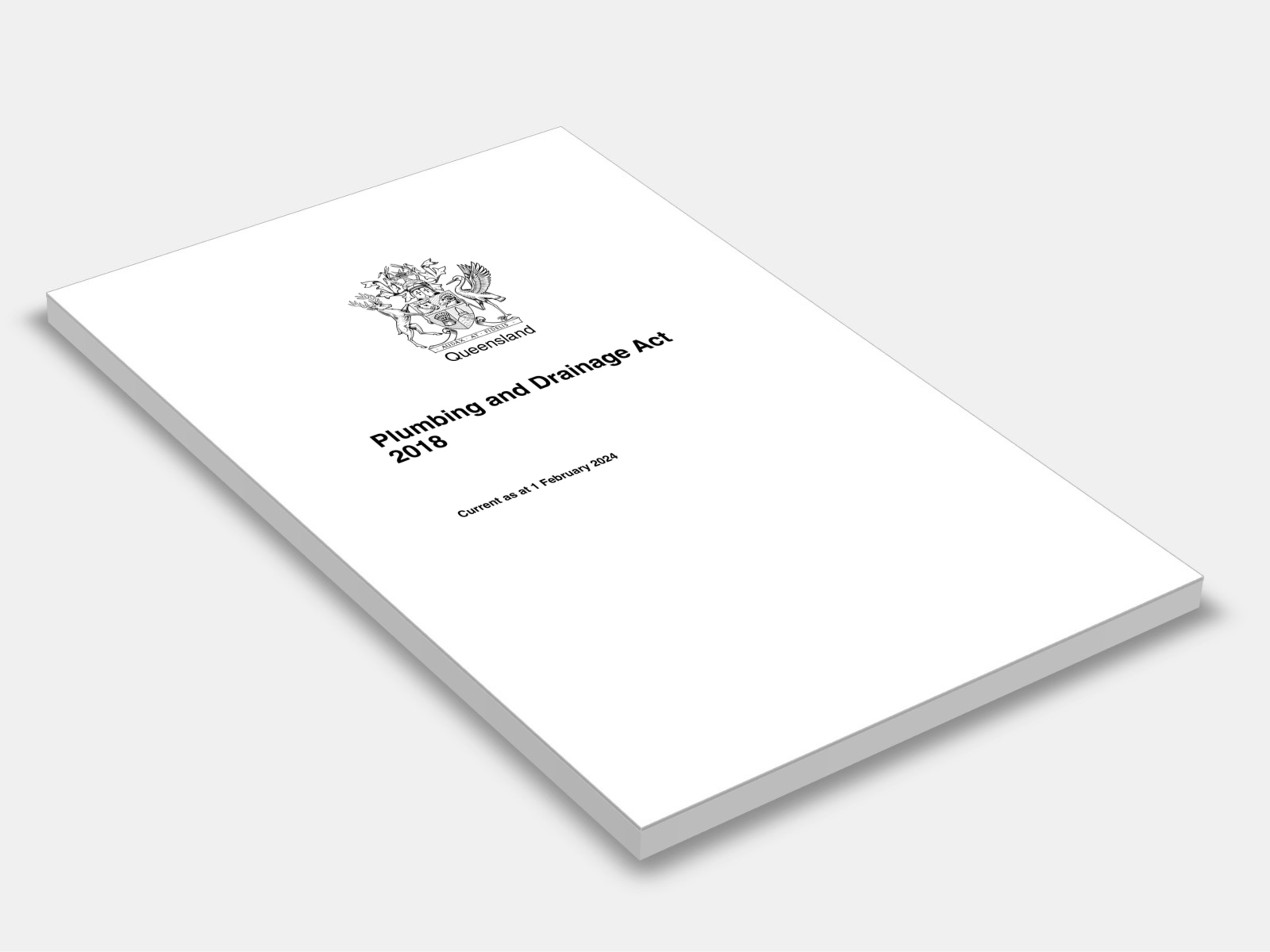
Type
Publisher
Queensland Government
Publisher
Queensland Government
Version:
2018.
(Current)
Short Description
This Act may be cited as the Plumbing and Drainage Act 2018. (QLD legislation.)
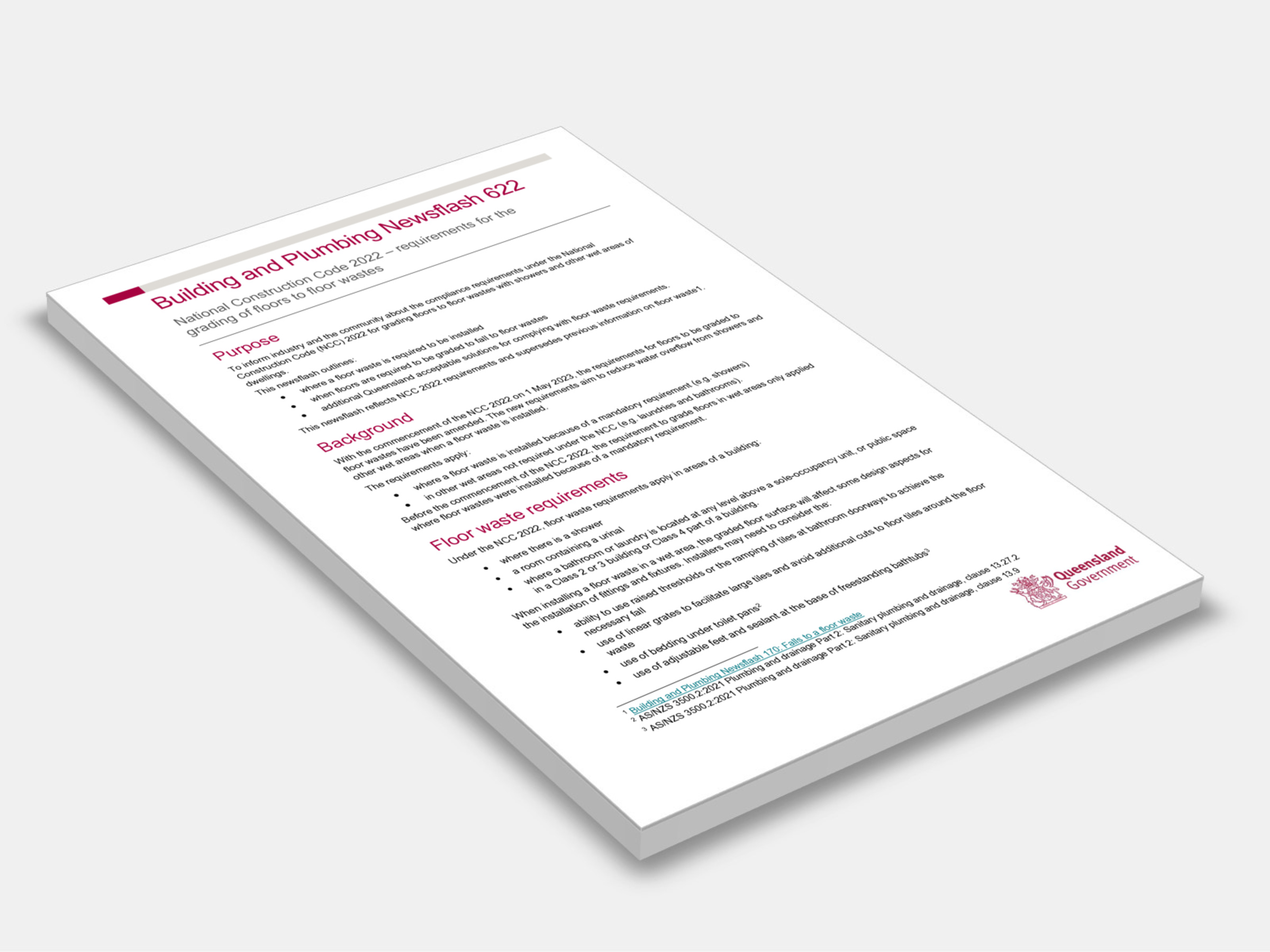
Type
Publisher
Queensland Government
Publisher
Queensland Government
Version:
2023.
(Current)
Short Description
To inform industry and the community about the compliance requirements under the National Construction Code (NCC) 2022 for grading floors to floor wastes with showers and other wet areas of dwellings.
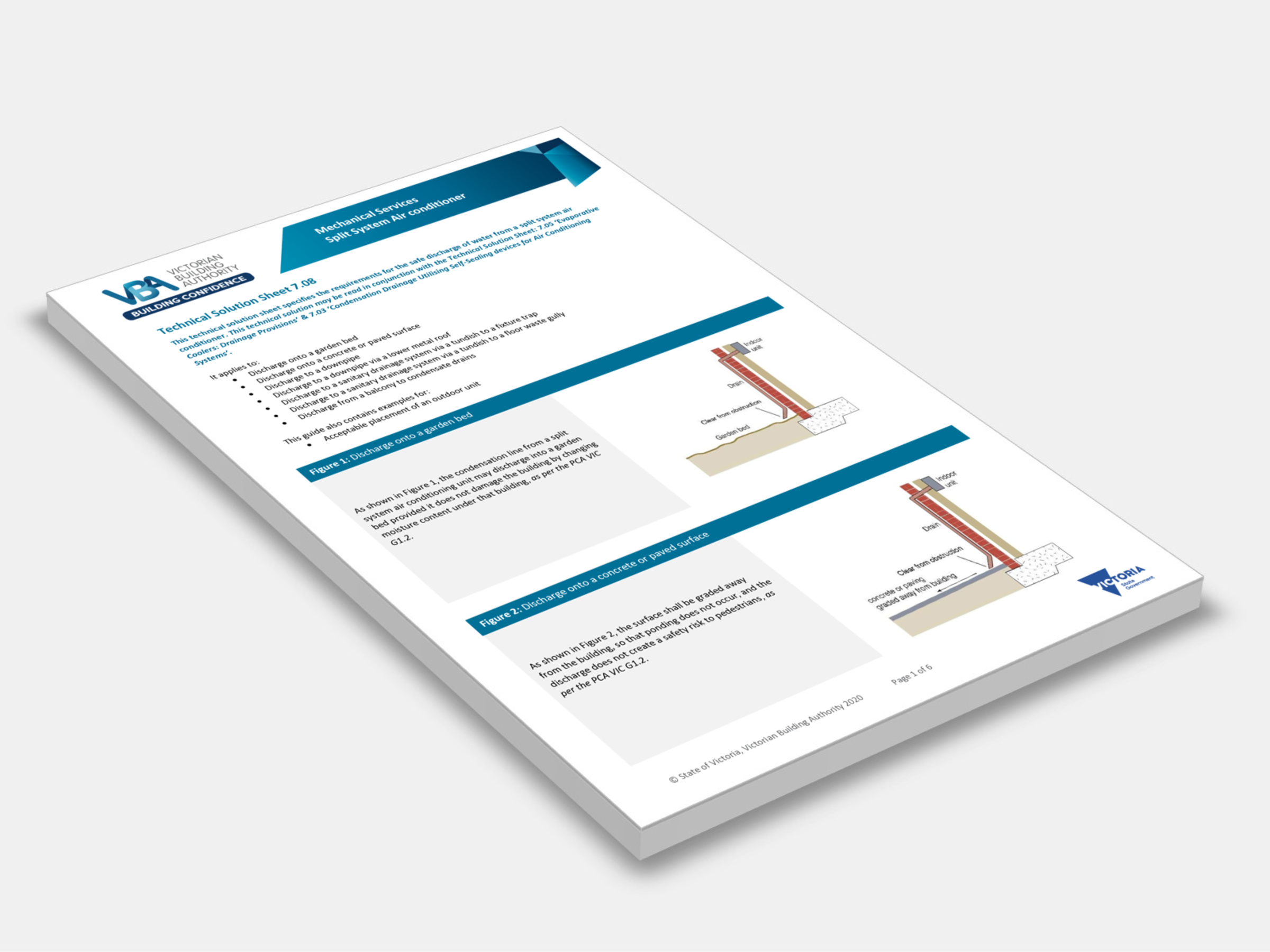
Type
Publisher
Victorian Building Authority
Publisher
Victorian Building Authority
Version:
2020.
(Current)
Short Description
Specifies the requirements for the safe discharge of water from a split system air conditioner.
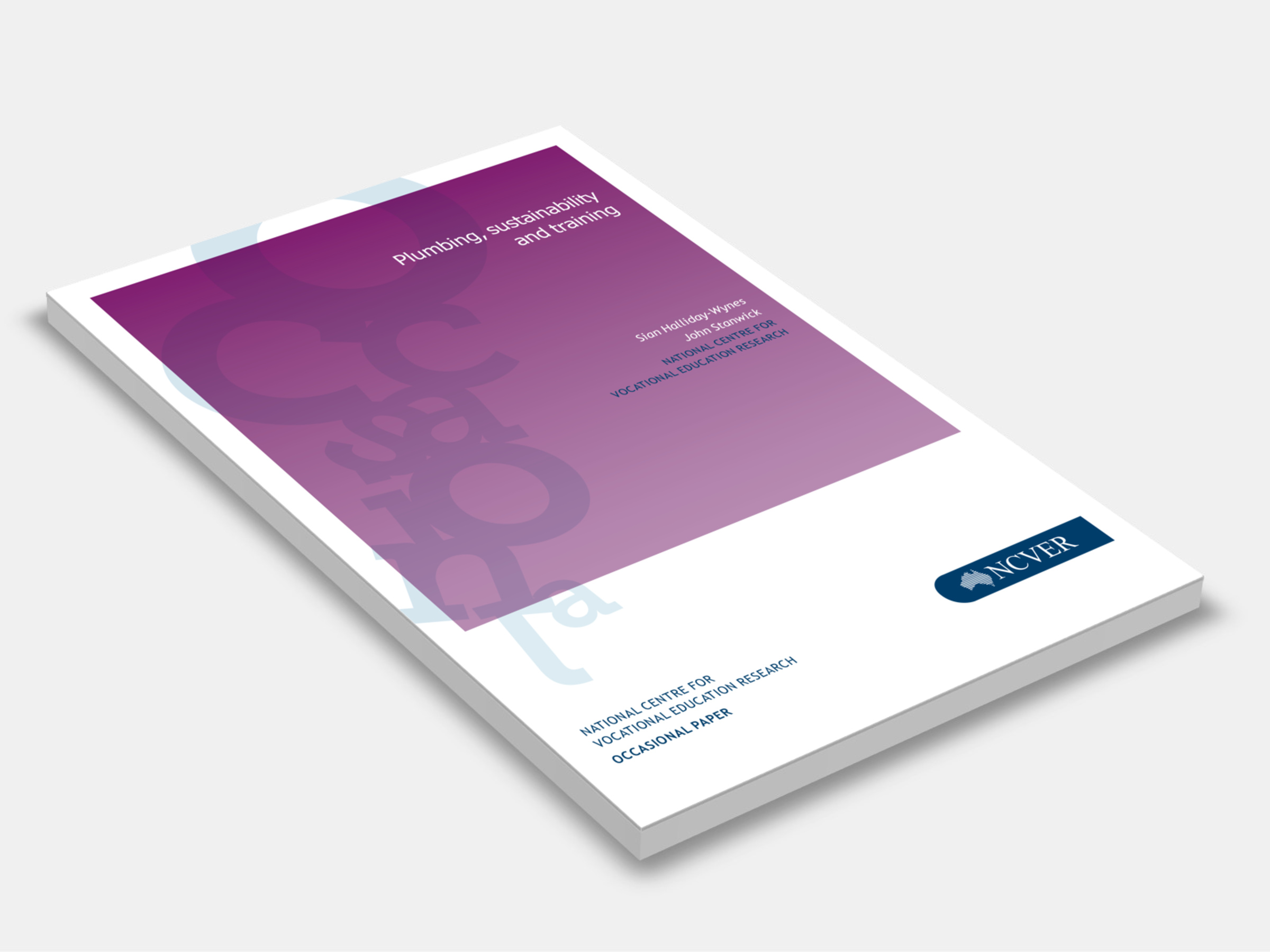
Type
Publisher
National Centre for Vocational Education Research
Publisher
National Centre for Vocational Education Research
Version:
2011.
(Current)
Short Description
This paper examines sustainable environmental solutions in domestic plumbing.

Type
Publisher
Australian Building Codes Board
Publisher
Australian Building Codes Board
Version:
2023.
(Current)
Short Description
This report considers the research conducted previously on the current methods for sizing sanitary plumbing and drainage systems used within Australia and takes into account industry observations to propose improvements to these methods